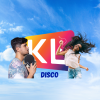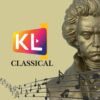-
 play_arrow
play_arrow
Kl 1 Radio Local radio for west Norfolk
-
 play_arrow
play_arrow
KL DISCO KL Disco Playing Disco Music from the 70's onwards.24/7
-
 play_arrow
play_arrow
KL COUNTRY KL COUNTRY Playing New and Classic Country Music 24/7
-
 play_arrow
play_arrow
KL ROX KL ROX The best of New and Classic Rock.24/7
-
 play_arrow
play_arrow
KL SUMMER Summer Vibes 24/7 from KL1 Radio across West Norfolk
-
 play_arrow
play_arrow
KL CLASSICAL Your Symphony Starts Here
-
 play_arrow
play_arrow
KL CHILL Just Chill!
-
 play_arrow
play_arrow
KL POP The Best POP Hits all day Long!
-
 play_arrow
play_arrow
KL XTRA KL XTRA
music_note

Investigators examining a fatal crash involving two trains in mid Wales have found evidence suggesting one of the trains may have slid while braking.
The Rail Accident Investigation Branch (RAIB) said the condition of the track on the approach to the collision point meant “adhesion” between wheels and rails was “relatively low”.
Initial evidence suggests the collision near Talerddig in Powys at 7.26pm on Monday night occurred at a speed of approximately 15mph.
A man in his 60s died, four other people were seriously injured and 11 more sustained injuries requiring hospital treatment.
The dead man’s next of kin have been informed.
The trains were both Class 158s operated by Transport for Wales (TfW).
It is believed the 6.31pm service from Shrewsbury to Aberystwyth travelled beyond where it should have stopped and hit the stationary 7.09pm service from Machynlleth to Shrewsbury.
The RAIB said: “RAIB’s initial inspection of the track on approach to the point of collision found evidence that wheel/rail adhesion was relatively low, suggesting that the train may have entered into wheel slide when braking.
“This will be an area of ongoing investigation.
“Our investigation is in its very early stages and an additional update will be available in the coming days once RAIB has gathered and analysed further evidence.”
Network Rail said one of its railhead treatment trains – which tackle autumn leaf fall – ran along the line where the crash occurred on Sunday night.
The crash happened on the Cambrian line in a rural location with a single track, close to a passing loop where trains travelling in opposite directions can pass each other.
Earlier on Monday, TfW advised passengers that its services were running at reduced speeds through Dovey Junction station – which is on the same line – because previous trains reported the track was “extremely slippery”.
The operator suspended all services on the separate Heart of Wales line on Tuesday “until further notice” due to “poor rail conditions”.
Leaves cause major disruption every autumn when they stick to damp rails and become compressed by train wheels.
This creates a smooth, slippery layer similar to black ice on roads, reducing trains’ grip.
Speed restrictions are often imposed in an attempt to reduce accidents such as the crash between two trains outside a tunnel near Salisbury, Wiltshire, in October 2021 which left 13 passengers and one driver requiring hospital treatment.
A South Western Railway (SWR) train slipped on crushed leaves, causing it to slide past a stop signal and smash into the side of a Great Western Railway service.
The SWR train was a Class 159, which is in the same family as the 158s.
Railway engineer Gareth Dennis said modern safety systems on Britain’s railways mean there is “very little” that can cause a collision between two trains.
He told the PA news agency that investigators will “look very closely” at whether it was caused by “low adhesion” between train wheels and the track.
Mr Dennis said a second potential reason could be that the European Train Control System (ETCS), which is an in-cab digital signalling system designed to keep trains apart, “failed in some way”.
News website Wales Online reported that a passenger on one of the trains, Jonah Evans, 25, said the driver warned travellers what was about to happen.
He said: “The driver ran in and sat on a chair and said ‘brace yourselves, we’re about to hit a train’.
“Someone lost their teeth, cracked ribs.
“Because the driver told us it was happening, we could kind of get ready.”
Another passenger, Anthony Hurford, told BBC Breakfast: “The word that keeps coming to my head is just ‘brutal’, really. Just going from, I don’t know how fast we were going, maybe 40, 50, 60 miles an hour, to nothing in the blink of an eye.
“Somehow my body bent the leg of a table and ripped it off its bolts attached to the wall. Suddenly I was on the floor with my laptop strewn ahead of me wondering what the hell had happened.
“We tried to stop at the lights. At the top of the hill there’s a signal that I guess would’ve been a passing place and for whatever reason the train wouldn’t stop.
“There must’ve been 30/40 people from fire (service), there was British Transport Police who had come from Birmingham, there were three helicopters, people had come from north and south Wales as far as I’m aware. I was checked by three or four different medics.”
Both trains remained on the tracks.
The RAIB said it will publish an additional update on its investigation “in the coming days” once it has gathered and analysed further evidence.
Transport Secretary Louise Haigh said: “Safety on our railways is my absolute priority and we are working at pace with Transport for Wales and Network Rail to understand what happened and how we can better prevent it going forward.”
The last incident in which a passenger died following a collision on Britain’s railways was the derailment of a ScotRail train which hit a landslip in heavy rain in Stonehaven, Aberdeenshire, in August 2020, which resulted in the deaths of one passenger and two crew members.
The Cambrian line east of Machynlleth will remain closed while specialist teams investigate the collision.
Published: by Radio NewsHub

Similar posts
Upcoming shows

Darren Furzey – Classic Hit Weekend
1:00 pm - 3:00 pm

John Atkins – Sunday 60’s and 70’s
3:00 pm - 6:00 pm

Frank Hopping – Real Music Society
6:00 pm - 8:00 pm

Mike Bentley – The Theatre Show
8:00 pm - 10:00 pm

Jonathan Charles – Vinyl Countdown
10:00 pm - 11:00 pm
Message Us
Copyright The Mediasite UK - 2025








